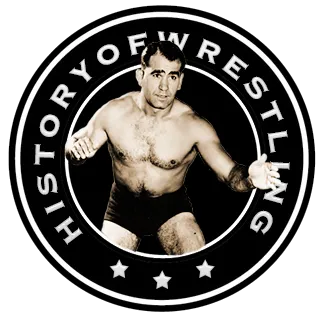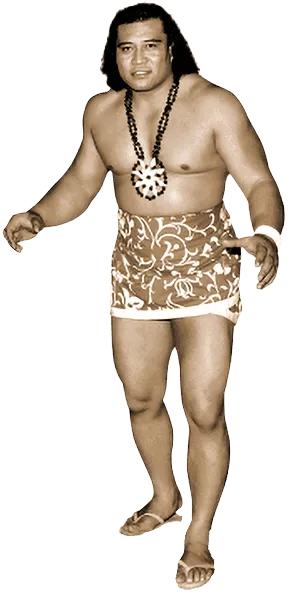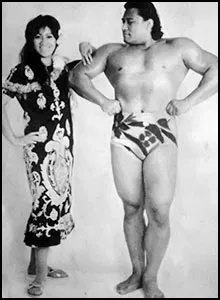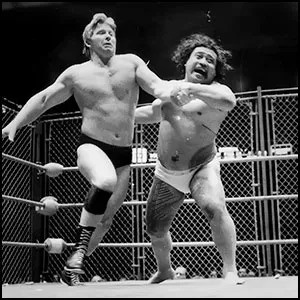by Stephen Von Slagle
Without question, the legendary “High Chief” Peter Maivia is remembered for many things; being a powerful, agile performer who was well-schooled in the fundamentals of pro wrestling, his famous full-body tribal tattoos, his successful stints in top promotions throughout the NWA, WWWF, and AWA, or simply being Dwayne “The Rock” Johnson’s grandfather. But, it can be argued that Maivia’s greatest contribution to the sport of professional wrestling was the fact that by using his natural charisma and impressive athletic ability, he was able to capitalize on the exposure he received by being (essentially) the first ‘islander’ to be showcased by promoters beginning in the early Sixties. In doing so, the talented Samoan opened the door for so many of his fellow Polynesians (several of whom also went on to become pro wrestling legends) to have a place in the professional wrestling business.
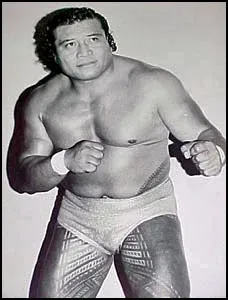 Maivia was born Fanene Leifi Pita Anderson on April 6, 1937, in American Samoa. Having received his training from Steve Rickard, Maivia began his career as a professional wrestler in 1962 at the age of twenty-four. Getting his start in the nation of New Zealand while competing for Rickard’s NWA promotion, he was known initially as Prince Peter Maivia. The young Samoan was an instant hit with New Zealand’s fanbase and he quickly established himself as a top contender for the promotion’s top prize, the New Zealand Heavyweight championship. On August 3, 1964, while still essentially a rookie, he received a shot at the title and upset the far more established Rickard for the first championship victory of Maivia’s young career. He then followed that with another win later in 1964, capturing the NWA Australasian Heavyweight championship belt, a title he would wear for the following four years.
Maivia was born Fanene Leifi Pita Anderson on April 6, 1937, in American Samoa. Having received his training from Steve Rickard, Maivia began his career as a professional wrestler in 1962 at the age of twenty-four. Getting his start in the nation of New Zealand while competing for Rickard’s NWA promotion, he was known initially as Prince Peter Maivia. The young Samoan was an instant hit with New Zealand’s fanbase and he quickly established himself as a top contender for the promotion’s top prize, the New Zealand Heavyweight championship. On August 3, 1964, while still essentially a rookie, he received a shot at the title and upset the far more established Rickard for the first championship victory of Maivia’s young career. He then followed that with another win later in 1964, capturing the NWA Australasian Heavyweight championship belt, a title he would wear for the following four years.
After several years working for Rickard in New Zealand, Maivia began competing in Hawaii, where he was once again an immediate hit with the wrestling audience. On May 22, 1968, Prince Peter Maivia teamed with Jim Hady to win the NWA Hawaiian Tag Team title by defeating the rugged team of King Curtis Iaukea & Ripper Collins in Honolulu. The feuding duos wrestled on a nightly basis throughout the Hawaiian islands and on June 4, 1968, Iaukea & Collins regained their championship, again in Honolulu. However, Hady ended up on the disabled list and Maivia immediately formed another partnership, this time with Billy White Wolf (Adnan Al-Kassie). Together, they quickly rebounded by taking the Hawaiian Tag Team belts back from Collins & Iaukea on June 26, 1968. From there, the popular combo held the belts for four weeks, successfully defending the championship nearly twenty times during their brief reign. Later, in 1973, Maivia captured the Hawaiian Tag Team championship twice more, both times with the popular Hawaiian grappler Sam Steamboat.
Following his stays in New Zealand and Hawaii, Maivia moved on to his next major booking, this time in California. Maivia worked briefly in the LaBell’s L.A. territory before settling in Roy Shire’s thriving San Francisco promotion. Immediately upon arriving in the territory, the popular and talented Samoan became one of the talent-rich territory’s top fan favorites, particularly after forming an allegiance with the region’s most beloved babyface, the great Ray Stevens. It was with “The Crippler” that Peter Maivia won his most prestigious title to date, the NWA World Tag Team championship. With the full support of the northern California fanbase behind them, Stevens & Maivia reigned over the region as champions for three months before finally losing the straps to the impressive team of Pat Patterson & Billy Graham in 1971. Ironically enough, Maivia would team with Pat Patterson several years later (once Patterson, a San Francisco icon in his own right, had turned babyface) to become a two-time NWA World Tag team champion in 1974. During his lengthy stay in Shire’s San Francisco promotion, Maivia also enjoyed a very successful singles career, to say the least, and in addition to his three reigns as a World Tag team title co-holder, Peter Maivia also twice captured the prestigious NWA United States championship, first in 1971 and again in 1974. All total, Maivia wore the San Francisco promotion’s coveted U.S. title for nearly a year and a half. Peter Maivia also won the territory’s Beat the Champ TV title in 1972 by defeating the hated German, Fritz Von Goering.
By the mid-Seventies, though, Maivia, having spent five years in Shire’s territory, once again made the decision to move on to a new territory. Late in 1974, the Polynesian superstar began competing in Paul Bausch’s thriving Houston promotion and captured the Texas Heavyweight championship in November of 1975 by defeating the legendary “Golden Greek” John Tolos. However, after a year of competing in Bausch’s Texas rings, Maivia received an offer to enter Vince McMahon, Sr.’s World Wide Wrestling Federation, where he once again quickly became a top performer. After arriving in the Northeast, the powerful and unique Maivia (who now sported the distinctive tattoos of a High Chief, having been legitimately elected to the elite position by his fellow Samoans) immediately connected with the region’s fans, and, led by longtime babyface manager Arnold Skaaland, he enjoyed a solid position as a top draw in the WWWF’s multi-state territory. In the Winter of 1977, the High Chief became involved in a classic feud with a man who (behind the scenes) he had mentored several years earlier in Roy Shire’s San Francisco promotion, the reigning World Wide Wrestling Federation champion at the time, “Superstar” Billy Graham.
 Following an angle in which the flamboyant and controversial champion perpetrated a vicious sneak-attack on the popular islander, crushing his own ukulele over the unsuspecting fan favorite’s head, bloodying and temporarily rendering Maivia unconscious. An enraged High Chief demanded a showdown with The Superstar and on November 21, 1977, Peter Maivia and Billy Graham met at New York’s Madison Square Garden, with The Superstar’s WWWF Heavyweight championship on the line. His match with Graham was Maivia’s first time headlining The Garden and although the powerful Samoan did not walk out of the famed arena as the new champion, he and Graham’s stellar performance resulted in one of the most dramatic, exciting WWWF title matches of the era, one that did much in terms of raising Maivia’s stock in the eyes of Northeastern wrestling fans, who had been familiar with the tattooed Samoan warrior for a relatively short amount of time.
Following an angle in which the flamboyant and controversial champion perpetrated a vicious sneak-attack on the popular islander, crushing his own ukulele over the unsuspecting fan favorite’s head, bloodying and temporarily rendering Maivia unconscious. An enraged High Chief demanded a showdown with The Superstar and on November 21, 1977, Peter Maivia and Billy Graham met at New York’s Madison Square Garden, with The Superstar’s WWWF Heavyweight championship on the line. His match with Graham was Maivia’s first time headlining The Garden and although the powerful Samoan did not walk out of the famed arena as the new champion, he and Graham’s stellar performance resulted in one of the most dramatic, exciting WWWF title matches of the era, one that did much in terms of raising Maivia’s stock in the eyes of Northeastern wrestling fans, who had been familiar with the tattooed Samoan warrior for a relatively short amount of time.

When Graham lost his prized championship to Bob Backlund in February of 1978, the promotion went on to create a shocking angle in which Maivia, a career-long fan favorite, turned heel on the young champion and their shared manager, Arnold Skaaland. After violently betraying the new WWWF champion, Maivia was scheduled to once again wrestle in the main event at Madison Square Garden, exactly 366 days since his last M.S.G. title match.
A great deal had changed in the year since Maivia faced Graham and, against Backlund, he was clearly not the fan favorite. Despite the fact that he was performing as a heel for the first time in his career, Maivia quickly adapted himself to the new role. With their wild and bloody first encounter concluding in an indecisive outcome, another Backlund-Maivia title match was scheduled for The Garden the following month. However, that match also ended without a pinfall victory, so a third & final match was booked for the WWWF’s December M.S.G. card, this one to be held within a fifteen-foot high steel cage. Following twenty minutes of bloody, brutal ring action, Backlund finally defeated the treacherous Samoan, ending their feud in dramatic fashion. Following his lengthy program with Backlund, the now-hated High Chief (who had enlisted the aid of manager “Classy” Fred Blassie) remained a high-profile member of the World Wide Wrestling Federation talent roster. Yet, during the last two years of the decade, Maivia also made frequent trips back to New Zealand, where he remained one of the most popular wrestlers that the NWA’s New Zealand office had ever booked and, during this territorial era, the versatile Maivia simultaneously portrayed a loathsome heel in America and the most noble of heroes when competing “Down Under.” In 1978, the gifted Samoan captured the NWA British Empire/Commonwealth Heavyweight title and held the regional championship until losing to the hated Mr. Fuji in August of 1979. Meanwhile, back in the States, Maivia eventually left the WWWF after a stellar run and returned to the NWA’s Hawaiian territory, not only as a main-event (and, once again, a babyface) wrestler, but, unbeknownst to the fanbase, as the new owner of the Alliance’s Hawaiian promotion.
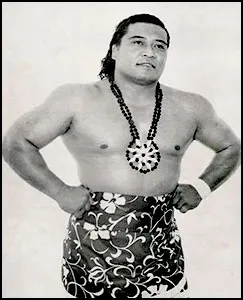 When Maivia bought the promotion in 1980, the NWA’s Hawaiian territory, which had (for obvious reasons) always been a much sought-after assignment for most wrestlers was, nevertheless, one of the smallest members of the Alliance. Yet the promotion, which had seen more than it’s share of peaks and valleys in terms of both popularity and profitability, once again began to thrive under the strong, new leadership of Maivia. As one of the most famous athletes ever to come out of the South Pacific, it would’ve been natural for the beloved High Chief to win many championships upon his return. However, as the owner of the territory, Maivia felt it was best if other wrestlers competed over the region’s title belts while he lessened his role, at least in terms of holding championships. As a result, Maivia held won just a single title, the Hawaiian Heavyweight championship, while he owned the territory, and the legendary Samoan dropped the belt to Hans Schroeder just one week after winning it from Ripper Collins.
When Maivia bought the promotion in 1980, the NWA’s Hawaiian territory, which had (for obvious reasons) always been a much sought-after assignment for most wrestlers was, nevertheless, one of the smallest members of the Alliance. Yet the promotion, which had seen more than it’s share of peaks and valleys in terms of both popularity and profitability, once again began to thrive under the strong, new leadership of Maivia. As one of the most famous athletes ever to come out of the South Pacific, it would’ve been natural for the beloved High Chief to win many championships upon his return. However, as the owner of the territory, Maivia felt it was best if other wrestlers competed over the region’s title belts while he lessened his role, at least in terms of holding championships. As a result, Maivia held won just a single title, the Hawaiian Heavyweight championship, while he owned the territory, and the legendary Samoan dropped the belt to Hans Schroeder just one week after winning it from Ripper Collins.
At the same time he was running the Hawaiian territory, the High Chief took bookings with other groups, most notably the NWA’s Los Angeles promotion. Once again performing as a heel, Maivia’s winning ways continued when he captured the region’s top prize, the Americas Heavyweight title, by defeating Rick Davidson in March of 1981. Although he held the belt for three full months, the most notable event to come from his early-Eighties run in Los Angeles was not his reign as the Americas champion, but his bitter, gruesome feud with the rulebreaking Samoan’s former protégé Victor Rivera. Rivera had previously been one of L.A.’s most controversial heels and an ally of Maivia’s. However, when the Puerto Rican star began receiving the cheers of the fans, The High Chief took exception and began what would turn out to be one of the most violent feuds ever to take place in the LaBell’s Los Angeles-based promotion.
However, late in 1981, Maivia, always known for keeping himself in great condition physically, became quite ill after years of ignoring tell-tale symptoms and refusing to see a medical doctor when urged by his family and/or co-workers. By the time he finally did seek medical attention in early 1982, it was too late; cancer had spread throughout Maivia’s entire body. When he passed away, though, High Chief Peter Maivia left behind a legacy that is virtually unparalleled in wrestling history. Of course, his wife Ata continued to promote the Hawaiian territory, with great success, from 1982 through 1988. Following Peter’s death, Ata Maivia was even elected Vice President of the National Wrestling Alliance, the first and only female to ever hold the lofty position.
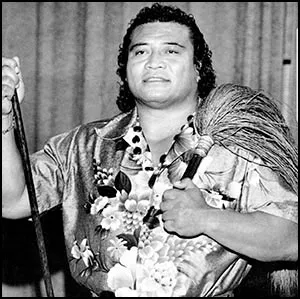 Meanwhile, as the patriarch of what is perhaps the most prolific and successful of all of wrestling’s dynasty’s, the Samoan wrestling family, High Chief Peter Maivia set the stage for essentially every island wrestler who followed him. Forever owing Maivia a debt of gratitude are men (and, in most cases, relatives) like the Wild Samoans, Jimmy “Superfly” Snuka, Yokozuna, the Samoan Swat Team of Samu & Fatu (Rikishi), Meng/Haku, The Tonga Kid, Umaga, The Usos, Roman Reigns and many other Polynesian wrestling superstars who followed in the High Chief’s footsteps.
Meanwhile, as the patriarch of what is perhaps the most prolific and successful of all of wrestling’s dynasty’s, the Samoan wrestling family, High Chief Peter Maivia set the stage for essentially every island wrestler who followed him. Forever owing Maivia a debt of gratitude are men (and, in most cases, relatives) like the Wild Samoans, Jimmy “Superfly” Snuka, Yokozuna, the Samoan Swat Team of Samu & Fatu (Rikishi), Meng/Haku, The Tonga Kid, Umaga, The Usos, Roman Reigns and many other Polynesian wrestling superstars who followed in the High Chief’s footsteps.
Peter Maivia is a member of the WWE Hall of Fame (2008) and the Professional Wrestling Hall of Fame (2016).
High Chief Peter Maivia passed away on June 13, 1982 at the age of 45.
